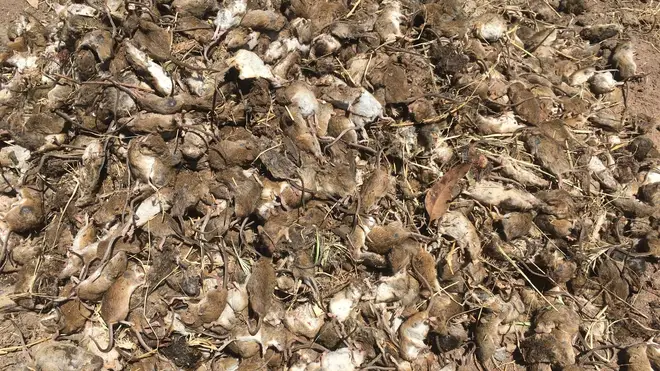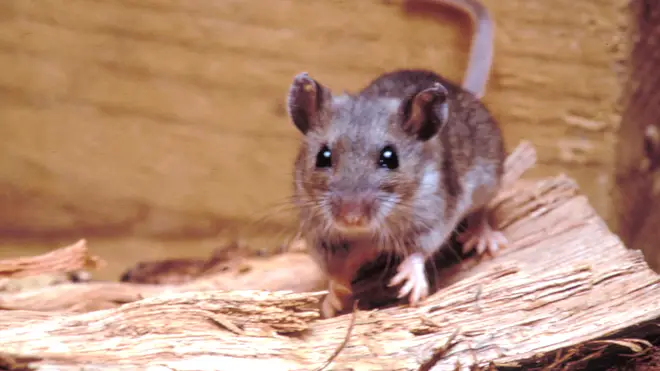
Nick Ferrari 7am - 10am
25 May 2021, 11:06 | Updated: 25 May 2021, 11:21
Warning: Contains graphic content

Parts of New South Wales in Australia are suffering from an ongoing plague of mice after good weather conditions and a bumper crop for farmers created optimum conditions for the rodents to breed in vast numbers.
Infestations are getting so out of control that farmers have warned their homes and livelihoods are under threat.
After years of dry weather, the drought has come to an end and farmers were hoping to make up for their economic losses.
But the weather created perfect conditions for mice to multiply, with far fewer natural predators and an abundance of food.
Now farmers are struggling to make the financial recovery that they needed, as videos circulate showing the ground in barns and fields ‘moving with mice’.
The mouse plague just gets worse- mice pour out of a temporary silo and into an opportunistic trap near Dubbo. Sarah Pye was horrified by the scene - she says she’s “devastated, disgusted and done.” She says “after such a boomer of a season after drought, to lose it all is awful” pic.twitter.com/6bfzprY67j
— Lucy Thackray (@LucyThack) May 18, 2021
As well as eating crops, the mice are destroying electricals, vehicles and furniture belonging to Australia’s rural populations.
They are also having an emotional toll, with one farmer telling the BBC of how she was losing sleep because she would lie in bed and hear mice running across her pillow.
Read more: Government changes Covid-19 guidance in 8 areas - with no official announcement
Read more: Sasha Johnson: 'Four black men in dark coloured clothing' sought over shooting, police say
Mice are notoriously fast breeders.
One mouse can have up to 500 babies – known as pups – in a single breeding season, having a litter of between six and 10 every few weeks.
Because of this, controlling mice plagues is virtually impossible.

The authorities have announced a package of $50 million to tackle the plague, with promises of free mouse baiting and access to a previously outlawed type of rat poison.
But for many farmers, after years of poor crop yields due to dry weather, this may not be enough to save their livelihoods.
There is hope that the infestations will reduce as the weather gets colder and the rest of the ecosystem ‘catches up’ with the mice, which should see a return of their natural predators.